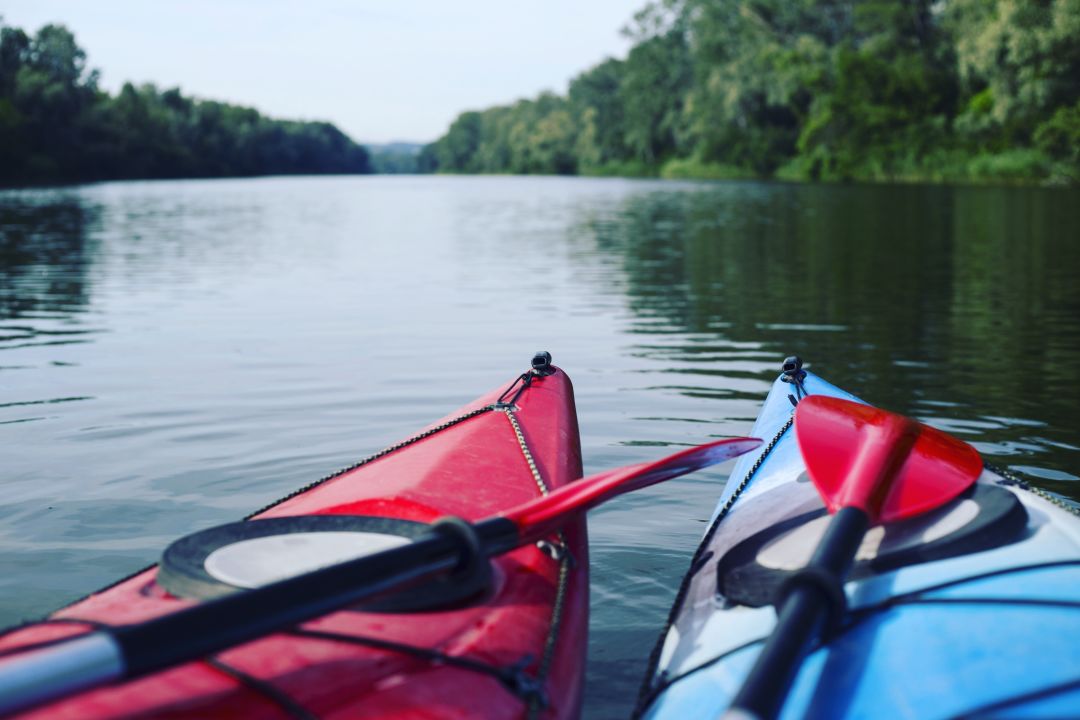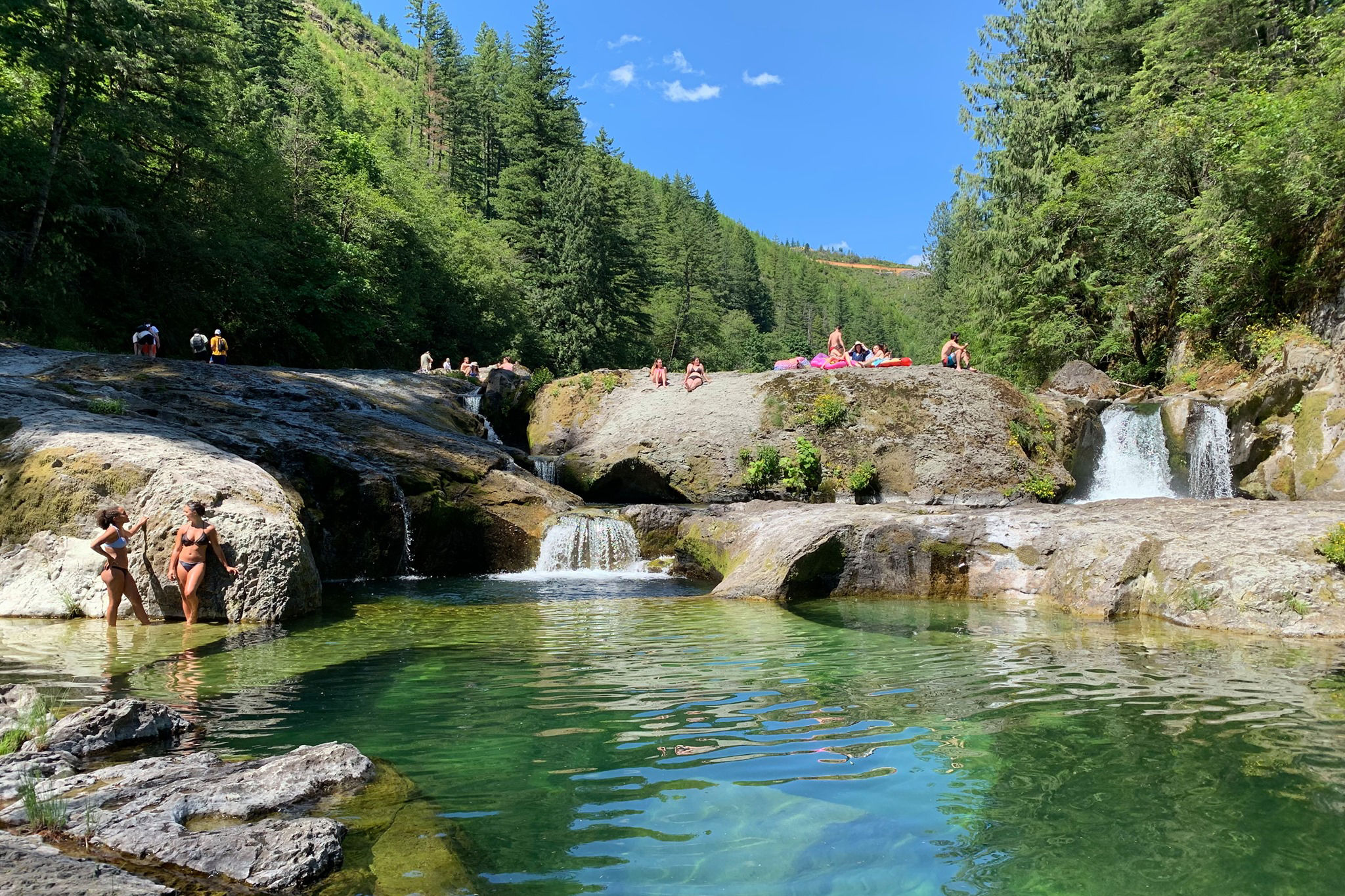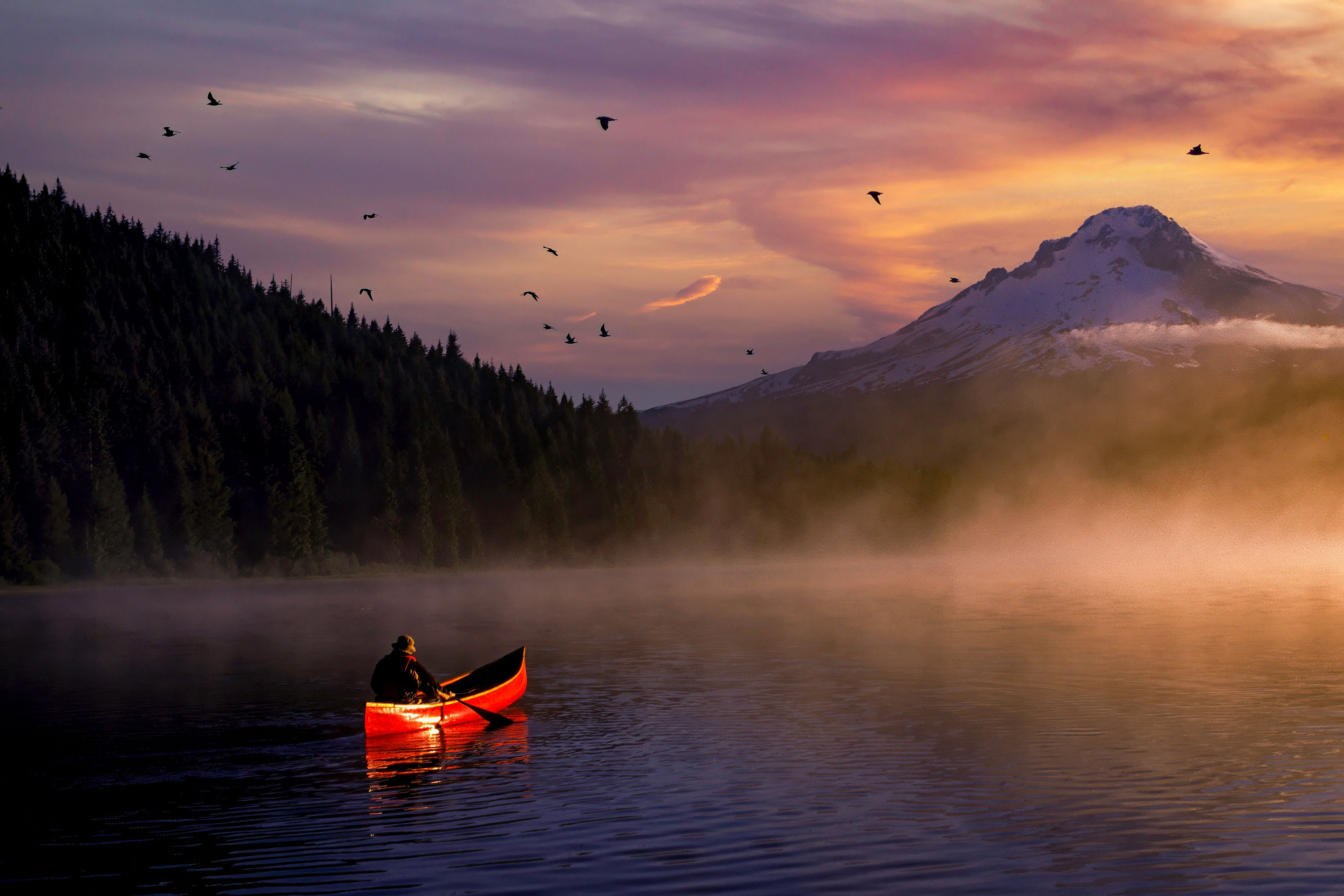Kayaking within Reach: A Guide for the Newbie

As an Indigenous woman, I always wrote kayaking off as a sport that was somehow not meant for me. Even though kayaks themselves have an Indigenous history, their modern use doesn’t always reflect that—it seemed like a wealthy white person’s hobby. But I’ve always had a strong desire to be on the water, and with some extra free time during the pandemic last summer, I decided to give it a try. I found a listing on Facebook Marketplace for cheap kayaks for sale by a business owner who was closing due to the pandemic, and jumped on it. I knew we would be social distancing for a while, so I thought kayaking would be the perfect activity.
I enjoyed it so much I started buying gear that would let me go out on the water in the spring and fall, too. The hardest part was figuring out how to haul my kayak on my own. First, I had to get used to driving my husband’s big, older truck. A more experienced friend taught me about kayak dollies and showed me how to finagle my kayak into the back of the truck on my own using a Pilates mat on the ground under one tip of my kayak to keep it from slipping as I hoisted the other tip up into the truck bed. It took a while to get comfortable just getting my kayak from my home to the water.
Each step of the way, I felt like giving up. I couldn’t seem to figure out the best advice regarding a wet suit vs. a dry suit for colder weather. I bought a kayak dolly that didn’t fit my kayak and, after putting it together on my own, had to return it. Trying to plop myself onto my kayak from the dock made me feel awkward and self-conscious. But every step of the way, I reminded myself that Indigenous people have been paddling these same waterways since time immemorial. This sport belongs as much to me as it does to non-Natives. And I wanted to be on that water.
Here are some tips for fellow newbies.
Gear
Kayak
- There are two types of kayaks: sit-in kayaks and sit-on-top kayaks. Sit-in kayaks are great for cooler weather because they protect your lower body inside the pit, and you can attach a “skirt” that will keep the water out. Sit-on-top kayaks are easier to get in and out of and are a bit more stable, because they are wider; for those reasons, sit-on-top kayaks may be better for recreational newbies and young children who will be paddling in warm weather.
- I suggest renting a couple different types of kayaks before you purchase one. A new kayak can be expensive, and you’ll want to make sure you get the one that is right for you. Rental options include Portland Kayak Company, Next Adventure Scappoose Bay Paddling Center, and Next Adventure Paddle Sports Center.
Permit
- If your kayak is 10 feet or longer, you will need to obtain a permit from the Oregon Department of Fish and Wildlife. You can apply for your permit online or get it from an ODFW agent. Registration is not necessary for kayaks under 10 feet in Oregon.
Kayak dolly
- If you plan to kayak with others, then you may be able to get by without a dolly by asking your compadres to help you carry your kayak. If you plan to go solo most of the time, or if you want to kayak where there is a bit of a walk between the parking lot and launch spot, you’ll want a kayak dolly that you can easily attach and detach yourself. Dollies are fairly inexpensive—you can find them online for $50 or less.
Paddles
- There are paddles for every type of kayaker. I got mine at Walmart for less than $20. My neighbor has paddles that cost around $200. I have used hers and honestly don’t notice a difference, but some people say it matters.
Life jacket vs. personal flotation device
- According to Oregon law, all kayaks must carry one Type I, II, or III wearable flotation device.
- All life jackets are personal flotation devices (PFDs), but not all PFDs are life jackets. True life jackets are very buoyant and will cause the wearer to lean backwards in the water. Personal flotation devices are designed to “assist” stronger swimmers on the occasion that they tip out; however, they are less buoyant. The type of PFD you need depends on your swimming skills and kayaking location.
Wet suit, dry suit, or something in between
- If you’re planning on kayaking only during the warmest summer weather, you can probably get away with just wearing regular clothes. However, if you want to extend your kayaking season or be able to kayak on cooler days, you might consider a wet suit or dry suit, or a combination of the two. A wet suit is made of varying thicknesses of neoprene and is designed to hold water in between the suit and the skin, causing the water to warm against the body, therefore keeping the body warm in cold water. A dry suit is designed to keep the body completely dry if submerged in water, with tight rubber gaskets around the neck, wrists, and ankles to keep the water out.
- Wet suits and dry suits come in various styles and coverage. You can get a full suit for very cold winter weather, opt for a Farmer John or Farmer Jane–style sleeveless wet suit with a wet suit or dry suit jacket, or mix-and-match wet suit and dry suit tops and bottoms.
Gloves
- Unless you plan to make only short trips, I highly suggest investing in a pair of kayaking gloves. The good news is that they are cheap to purchase at a water sports store or online.
Booties vs. flip-flops
- You can absolutely wear a tough pair of good water sports flip-flops or water socks; however, neoprene booties are both hardy and will keep your feet warm if they get wet. Booties are necessary if you will be kayaking in cold water.
Dry bag
- A dry bag is exactly what it sounds like—a bag that keeps your things dry, even if submerged in water. You can store food, a water bottle, a camera, your cell phone, and a change of clothes (all recommended to take along).
Waterproof phone case
- A waterproof phone pouch is like a clear dry bag for your phone. It will keep your phone dry and attached to you so you don’t lose it, and you can still access your phone camera, GPS, and even text with it still in the case.
Lots of water
- Always come prepared with plenty of water to drink, especially in the summer. You can attach water bottles to your kayak with clips or stick them in the storage area.
Places to Go
Willamette River at Cathedral Park
The Willamette River hosts many launch points, but Cathedral Park has a nice, clean, safe beach that is well-attended by families and boaters alike. Just south of the boat launch is a nice little sandy beach with plenty of room for multiple groups to spread out, enjoy the sun, and launch kayaks and paddleboards. To the south, there are a handful of quiet, peaceful homeless camps on the shoreline, and then simply industrial areas mixed in with the trees. To the north lies an art installation with the word “Love” in plywood held together by wire, string, and beams on a pier near the St. Johns Bridge.
Columbia River at Scappoose Bay Marina Water Trail
Scappoose Bay Marina lies about 45 minutes north of downtown Portland on Highway 30. The drive is serene and dotted with a mixture of nature and industry, becoming more natural the farther out you get. Drive through Scappoose to the St. Helens area, and you’ll see signs for the marina, which has a large parking lot, multiple boat launch docks, and a dock dedicated especially for kayakers and paddleboarders. The bay is tranquil and provides many little pockets to explore off the main water trail. Head north and across the river to the lighthouse on the east side of Sauvie Island if you are interested in a physical challenge and a stunning view. Make sure to pack enough snacks and water for the trip!
Note: Scappoose Bay Marina hosts a Next Adventure location, where there are rentals, kayaks to purchase, other gear, and supplies. You can also buy a boat permit if your boat is over 10 feet.
Fairview Lake
Fairview Lake is located at the headwaters of the Columbia Slough (it is possible to enter the slough via kayak nearby) in a large, upscale neighborhood in Fairview, near Troutdale, just east of Portland. The launch is located at Lakeshore Park (3653 NE 217th Ave, Fairview). The launch dock is very clean, with a kayak launch spot and a lovely little park next to it with picnic tables and plenty of room for children to run and play. The entire lake is very shallow, making it the perfect location to learn kayaking and/or paddleboarding, especially for children and families.
The Columbia Slough
The Columbia Slough is an exquisite mix of nature and urban area. Wildlife and majestic birds make their homes alongside and in it, as do industrial sites. The slough is ideal for kayakers, as the water is very calm and the surroundings fairly quiet.
You can access the slough just west of Fairview Lake, where it begins. There are also many launch points along the slough. Some are a bit sketchy—it’s worth a look at the Paddler’s Access Guide to the Slough at this link.
A recommended, safe, accessible launch dock is located at the Whitaker Ponds Nature Park (7040 NE 47th Avenue, Portland). The parking lot is fairly new, and there is a very nice walking trail along Whitaker Pond. The launch site to the slough is located just northeast of the parking lot.
Smith & Bybee Lakes
Smith & Bybee Lakes are very popular and boast multiple launch sites. While there are several options for parking, you may have quite a hike to get to your launch site. Additionally, there may be a line for launching, without much room to navigate among other kayaks and people down narrow paths.
However, the scenery is breathtaking and well worth the work. During the spring, you can see turtles, and there’s always an abundance of wildlife. The Smith and Bybee Lakes Wetlands Natural Area is almost 2,000 acres in total and the largest urban protected freshwater wetland in America.
Hagg Lake
Hagg Lake, near Gaston, 25 miles southwest of Portland, offers a variety of outdoor activities, including kayaking, paddleboarding, fishing, boating, and 15 miles of hiking trails. The park is open from sunrise to sunset every day, and facilities open in late April (on the first day of the fishing season) and close in late October.
There are two boat launch sites, but watch out for the boaters and fishers. Neither group is particularly friendly to kayakers getting in their way! It’s best to stay away from the shore and give the boat launches plenty of room. Don’t try to cross in front of a boat launch unless it is completely clear, with no watercraft coming or going. Also, be aware of fishing lines if you paddle close to shore; sometimes it can be difficult to see the lines, particularly when you turn a quick corner.
Other Resources
Your fellow kayakers are founts of information, whether you sign up for a formal class, start a casual conversation, or never even interact in real life.




